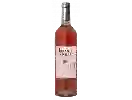
Winery Maurel VedeauLes Capitelles Saveurs Territoriales Cuvée Spéciale Costières-de-Nîmes
This wine generally goes well with beef, lamb or mature and hard cheese.
Food and wine pairings with Les Capitelles Saveurs Territoriales Cuvée Spéciale Costières-de-Nîmes
Pairings that work perfectly with Les Capitelles Saveurs Territoriales Cuvée Spéciale Costières-de-Nîmes
Original food and wine pairings with Les Capitelles Saveurs Territoriales Cuvée Spéciale Costières-de-Nîmes
The Les Capitelles Saveurs Territoriales Cuvée Spéciale Costières-de-Nîmes of Winery Maurel Vedeau matches generally quite well with dishes of beef, lamb or game (deer, venison) such as recipes of braised beef with guinness, chicken with merguez and tomatoes or rabbit with basquaise sauce.
Details and technical informations about Winery Maurel Vedeau's Les Capitelles Saveurs Territoriales Cuvée Spéciale Costières-de-Nîmes.
Discover the grape variety: Hibou noir
Very old grape variety cultivated in northern Italy in the Piedmont region. It would have been introduced in Savoy at the beginning of the 17th century. An A.D.N. study, dating from 2011, shows that Hibou noir and Avana are one and the same variety. It should also be noted that Amigne is its half-sister, Rèze its grandmother and Rouge du Pays (a variety from the Swiss Valais) its grandfather.
Informations about the Winery Maurel Vedeau
The Winery Maurel Vedeau is one of of the world's great estates. It offers 69 wines for sale in the of Costières-de-Nîmes to come and discover on site or to buy online.
The wine region of Costières-de-Nîmes
The wine region of Costières-de-Nîmes is located in the region of Rhône méridional of Rhone Valley of France. Wineries and vineyards like the Domaine Scamandre or the Château d'Or et de Gueules produce mainly wines red, pink and white. The most planted grape varieties in the region of Costières-de-Nîmes are Mourvèdre, Roussanne and Viognier, they are then used in wines in blends or as a single variety. On the nose of Costières-de-Nîmes often reveals types of flavors of non oak, thyme or raisin and sometimes also flavors of clove, cocoa or coffee.
The wine region of Rhone Valley
The Rhone Valley is a key wine-producing region in Southeastern France. It follows the North-south course of the Rhône for nearly 240 km, from Lyon to the Rhône delta (Bouches-du-Rhône), near the Mediterranean coast. The Length of the valley means that Rhône wines are the product of a wide variety of soil types and mesoclimates. The viticultural areas of the region cover such a distance that there is a widely accepted division between its northern and southern parts.
The word of the wine: Vegetative cycle
All the different phases of the vine's development: winter rest period, budburst, inflorescence, flowering, fruit set, veraison, ripening.













